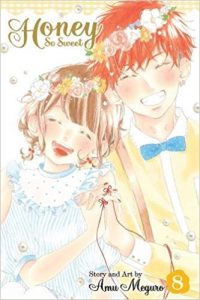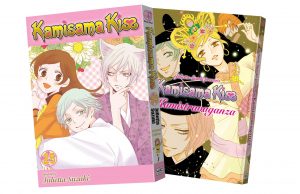Honey So Sweet Volume 8 by Amu Meguro
I’m a little worried about Shojo Beat’s list of titles now, because with both My Love Story!! and Honey So Sweet ending, it seems to be like there is a slight lack of super adorable manga currently being published. I’m sure something else will come along soon to full fans’ need for low conflict shoujo where everyone is genuinely nice to each other, but in the meantime I might have to get that extra warm and fuzzy feeling by rereading older series instead of from new manga.
This final volume focused on the characters’ all getting their lives together as Nao and Taiga start to approach the end of high school. In particular, Nao’s uncle Sou finally has a chance at a life outside of being a parent, as a long-lost love from his past suddenly reappears in his life. Sou has put aside his own feelings to a degree, with all of his efforts focused on Nao’s happiness. Nao is determined to demonstrate that she’s capable of being more self-sufficient, with the goal of encouraging Sou to move on. She has some predictably funny mishaps in her first attempts at household management.
In the end, Taiga’s usual blunt nature and heartfelt feelings cut to the heart of the matter in a conversation with Sou. Sou might find a way to move on as the young couple enters adulthood together. There’s a predictably happy ending, and a bonus story in the back of the manga that shows the first, one-shot version of the story. Overall, while Honey So Sweet might not be the most challenging manga to read, the whimsical illustrations and gentle pacing of the plot in each volume made it a perfect stress relieving manga. It is difficult to feel cynical about the world when reading Honey So Sweet, and that’s the main reason why I enjoyed this series so much.




Recent Comments